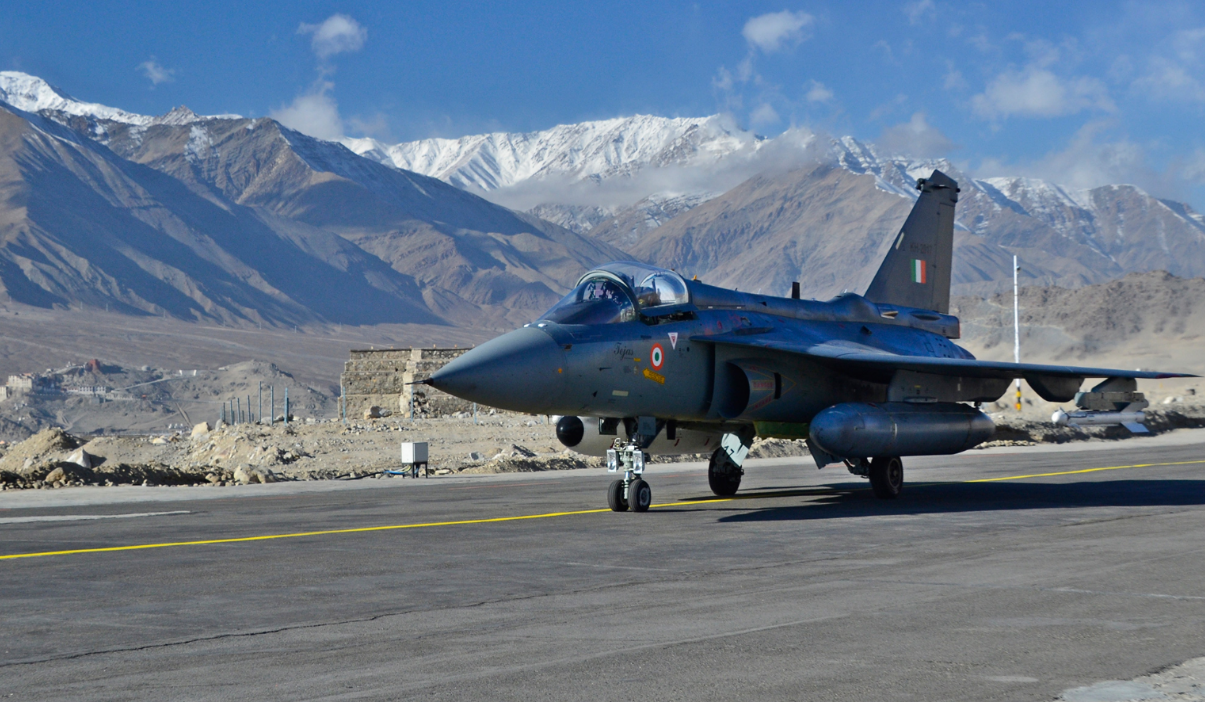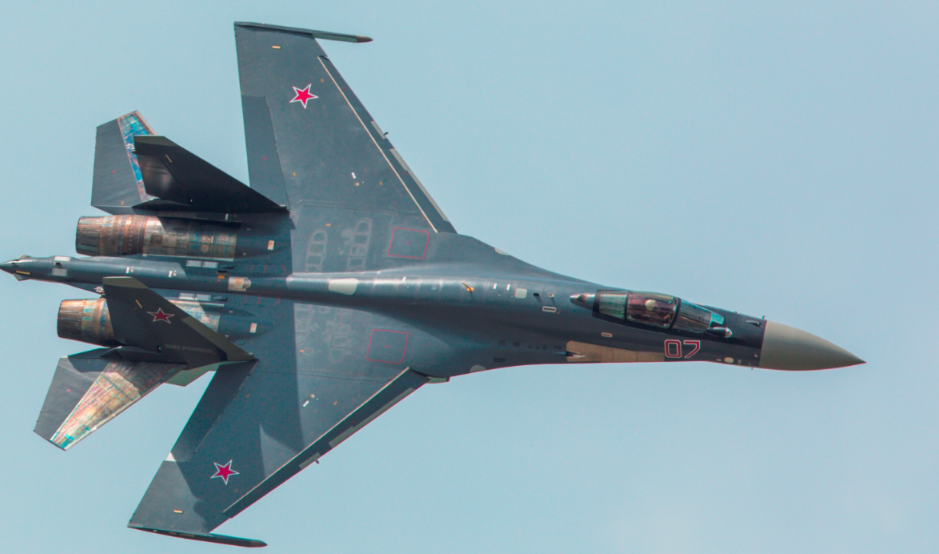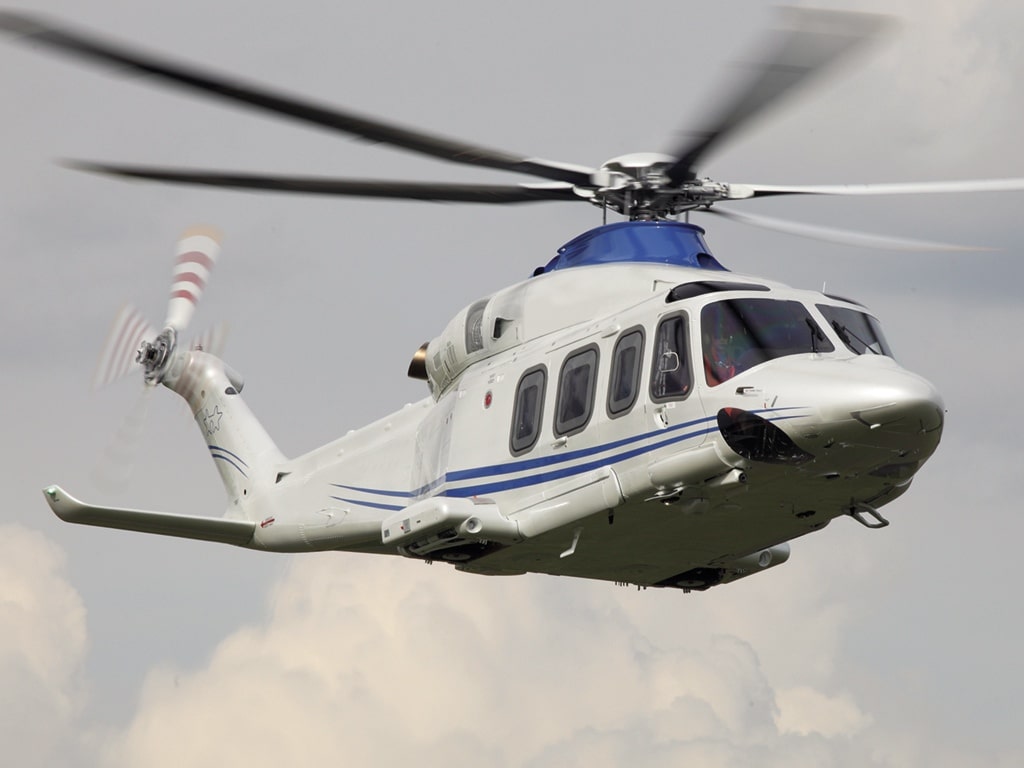2390Views 5Comments

Third Tejas Serial Production unit almost ready for induction
The third Hindustan Aeronautics Limited (HAL) Series Production (SP) unit for the Indian Air Force (IAF) is close to induction.
According to the Times of India, Tejas SP3 had successfully undergone low-speed taxi trials last week and high-speed taxi trials are scheduled to take place shortly. Its first flight is expected in a week’s time.
Notes & Comments:
The IAF inducted its first Tejas squadron in July when two units were handed over to the No. 45 Squadron at Yelahanka Air Base. Although inducted, the Tejas will enter full-scale production at HAL’s facilities in 2017 at a rate of at least eight aircraft per year. The Indian Ministry of Defence (MoD) hopes to see this output increased (to 16+) in subsequent years.
The IAF is expected to induct the Tejas over the long-term to gradually replace its MiG-21bis, which is currently the IAF’s mainstay lightweight point-defence fighter. As the Tejas assumes the MiG-21bis’ defensive role, the IAF will likely hone the Su-30MKI, Mirage 2000, MiG-29, and in time, Rafale units for offensive operations.
It will also be worth observing how the Rafale deal’s offset clause, particularly the 30% allocated for French vendor (e.g. Dassault, Thales, Safran Group, etc) investment in India’s military aviation efforts will impact Tejas development. Programs such as the Kaveri turbofan could see an influx not only funding, but also valuable outside party expertise and technology access to accelerate and close development.
A sufficient number of Tejas units in the IAF as well as greater indigenization of critical subsystems could provide the Tejas with the scale and independent supply base to be a very competitive export product. However, this is likely to be a medium-to-long term objective for HAL and the Indian MoD, especially in light of the IAF’s requirements and the remaining lead-time ahead of locally developed subsystems, such as the Kaveri.



5 Comments
by SP
Engine development is a difficult task which even China is struggling with, therefore I dont expect to see much progress with Kaveri.
The Tejas will give a boost to the local aviation industry as will the Rafale deal. The result of this could be major improvements in Tejas in the future as well as mass production of Tejas in the future. This could result in an increase in combat aircraft fleet of IAF in the future. Indian will seek to export Teja and it could be competing against JF17 in the same markets. Aviation companies the world over will seek to work with the indians in improving the Tejas and getting their subsystems installed. Therefore it is important that JF17 is a better quality product with more utility at better price, better reliability and after sales package. PAF needs to throw in free training and technical assistance to the airforces that operate JF17. Private sector should be encouraged to get involved but quality must be maintained.
by MT
1. Automation of component design & manufacturing is the priority for HAL which ll be homogenized by end of March 2017 after SP-9 is assembled leading to higher quality manufacturing with uniform size/shape fitting & functional specifications
2. FOC is delayed to year end but BVRAAM Derby test & IFR fitting are scheduled by this year end on old LSP platforms
3. 8 Tejas production a year from 2017 is very likely scenario .
HAL is ramping up infrastructure,tool,manpower into Tejas team targeting 2019 for Test trial of modified MK1-A.
Hal expect Tejas MK1-A modified with Israeli El/M-2052 AESA radar to cost around 40 mill$ with basic armaments & munitions.
by Muhammad Khurram Bhatti
Pakistan has come to a point where it can either keep the country or the corrupt within. Local industry cannot flourish without having a corruption free and industry friendly atmosphere. Without a capable local industry, Pakistan the disparity between Pakistan and India will grow exponentially every passing day. West does not come to India because they love them, they come to India because it benefits them. If Pakistan can have a better environment and better profit ratio, they will not hesitate to alter the route.
by nob hamid gul
I think It is tejas that is a threat to Paf. It gives Indian air force domestic maintenance Better serviceability rate and of course quantity with fairly advance systems.
Pakistan badly need to develop jf17 with new powerful engine advance ecm, radars and advance aam and standoff munition.
Such large number of jf17 will surely help Pakistan.
Domestic production is what that matters.
by SS_IND
Tejas SP3 reached operational capability ..with modern avionics, composites and much better than the JF-17 (Which Chinese have not inducted in there own Air Force). Tejas in its current development rate is soon going to be a completion for the F16. And with new engines from Ge 414 it would more agile and a brilliant fighter for the new generation of IAF.